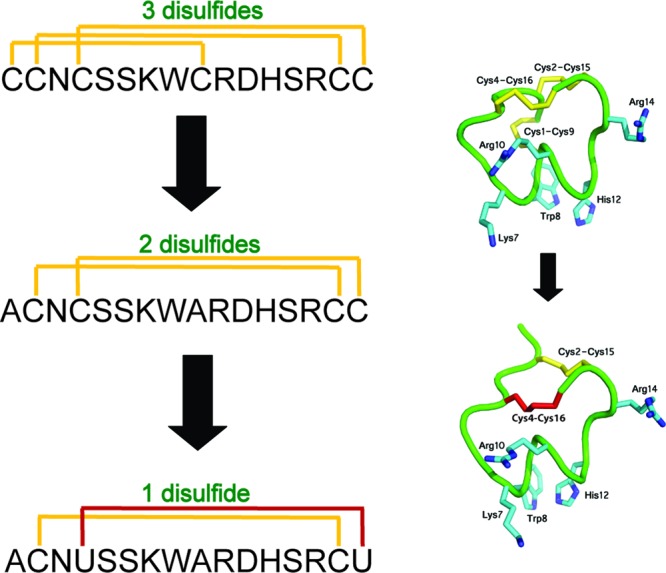Figure 2.

The disulfide-depleted selenopeptide strategy to simplify oxidative folding. The removal of a noncritical disulfide bridge in μ-KIIIA yielded μ-KIIIA[C1A,C9A].31,33 Next, one of two critical disulfide bridges was replaced by a redox-favored diselenide bridge, allowing a conversion of the three disulfide-bridged conotoxin KIIIA into disulfide-depleted selenopeptide ddKIIIA analogues. Model structures of μ-KIIIA and the disulfide-depleted KIIIA[C1A,C9A] analogue were prepared using the NMR-based coordinates.33 (Note that the second disulfide bridge in KIIIA[C1A,C9A] was colored red.) The key amino acid residues shown here, including Lys7, were identified using the Ala-walk strategy.38 All of the structures were visulized with the use of PyMOL program (Delano, W. L. The PyMOL Molecular Graphics System (2002) on World Wide Web http://www.pymol.org).
